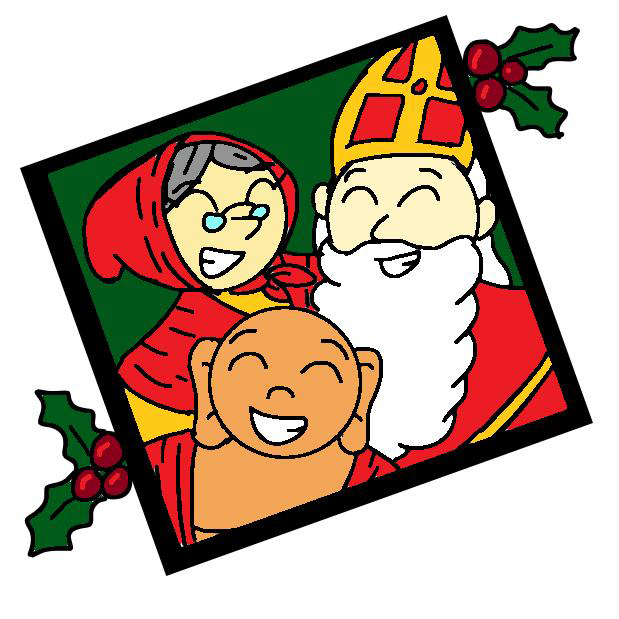Santa Claus, The Worldwide Legend
December 16, 2022
Most of America recognizes its own modern version of Santa Claus. Usually, he is obese and old, crawls through the chimneys of houses to set presents next to the Christmas tree, and notably, he appears on holiday Coca-Cola bottles. However, as other countries have their own traditional cultures and ideals, they also have their own distinct versions of Santa for Christmas.
In Japan, they have Hoteiosho, a Buddhist monk. He is bald, he carries a wooden staff, and he has stretched ears. However, he has similar physical and characteristic features to America’s Santa, such as an immense belly. Instead of putting names on the “naughty list,” however, Hoteiosho has eyes on the back of his head that allows him to see which children are behaving well or misbehaving. According to Pop Inquirer, he is one of the seven gods of fortune, whereby he is the god of fortune, popularity, and the guardian of children (pop.inquirer.net). Nonetheless, his influence slowly diminished as the Santa Claus stemming from Western culture was popularized in Japan. Junior Liam Holmes said, “I’m Japanese and am deep into Japanese culture, but this is my first time hearing about Japan’s own version of Santa.”
Likewise, Italy has its own version of Santa Claus. She goes by the name of La Befana and is known as a kind witch who brings gifts to well-behaved children, according to a website about Italy.. Like witches, she is old, has a hook nose, wears a witch hat, and rides a broom that she can fly with. Similar to Santa Claus, La Befana deposits items in stockings hung above the hearth. Junior Tommaso Panigada said, “La Befana will put candy in the stockings of good kids and coal in the stockings of kids who misbehave.” According to Italia Rail, unlike Santa from the Western culture, La Befana delivers gifts on Epiphany Eve in January, which has urged many to consider her name to be derived from the word “Epidania” (italiarail.com).
In the Netherlands, Saint Nicolas is known for establishing the origin of Santa. Sinterklaas is similar to Santa in many ways such as having a large beard and wearing all red. However, Sinterklaas’s characteristics are more religious. According to The Spruce Eats, Sinterklaas’s features follow Catholic standards, as he wears a bishop’s headdress and carries a shepherd’s staff (thespruceeats.com). Instead of elves manufacturing presents in their toy factory, he buys the presents from stores, and Zwarte Piet, his assistant, wraps them up. Moreover, Sinterklaas is told to arrive in The Netherlands and Belgium weeks before December 25, and his arrival is proclaimed on national television. Similar to how children prepare cookies by the fireplace for Santa Claus to indulge in, children in the Netherlands place shoes next to the chimney containing a carrot or hay for Sinterklaas’s horse, according to an article about Sinterklaas (diffen.com).
The inclusion of Santa Claus throughout various countries’ Christmas traditions uplifts the holiday, making the celebration infinitely more exciting for everyone who celebrates the holiday. Although many countries have a Santa figure that varies from the Western culture’s, the Christmas commemoration continues to influence ideas of gift-giving and the unification of families and communities.


